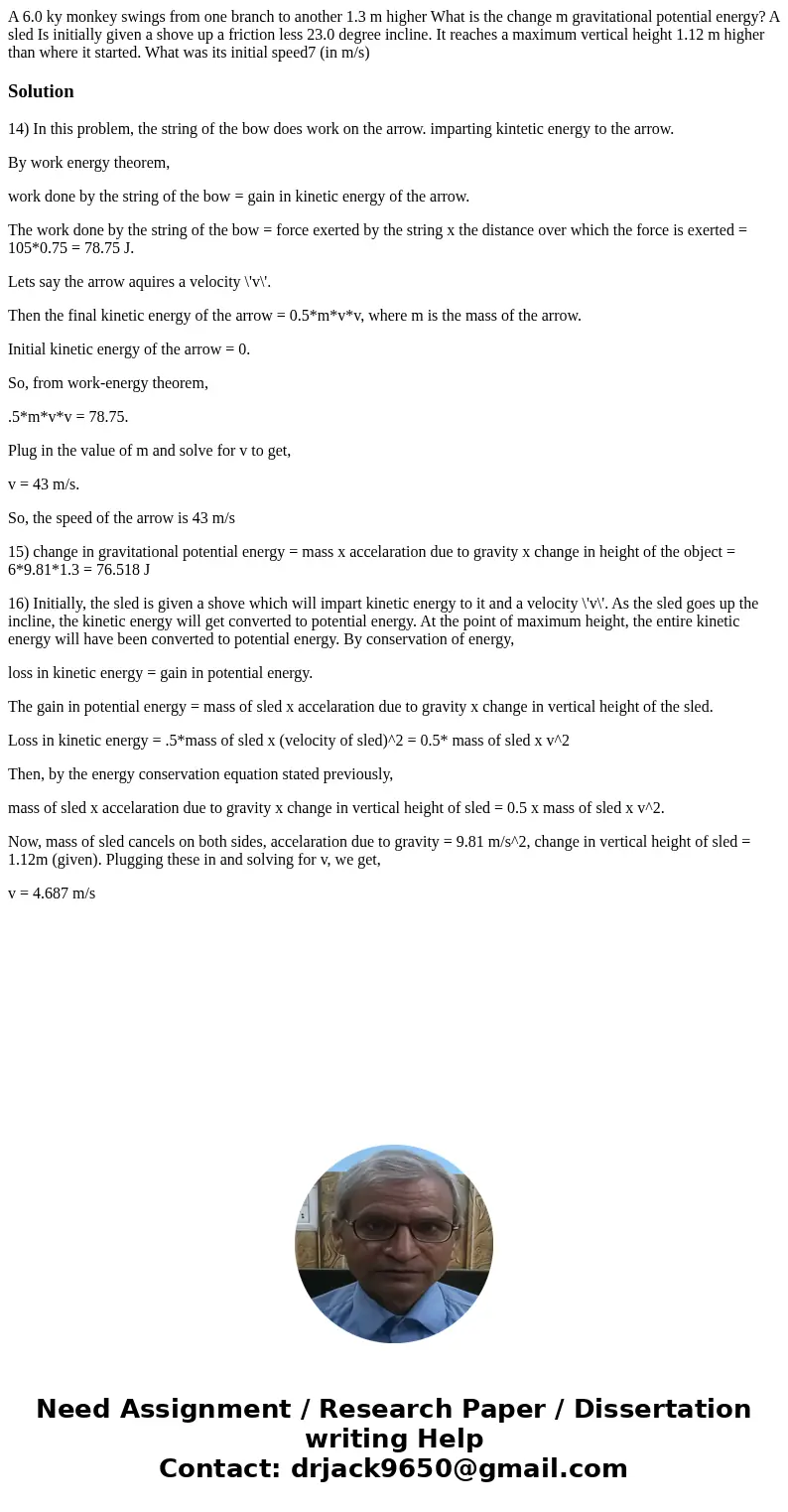A 60 ky monkey swings from one branch to another 13 m higher
Solution
14) In this problem, the string of the bow does work on the arrow. imparting kintetic energy to the arrow.
By work energy theorem,
work done by the string of the bow = gain in kinetic energy of the arrow.
The work done by the string of the bow = force exerted by the string x the distance over which the force is exerted = 105*0.75 = 78.75 J.
Lets say the arrow aquires a velocity \'v\'.
Then the final kinetic energy of the arrow = 0.5*m*v*v, where m is the mass of the arrow.
Initial kinetic energy of the arrow = 0.
So, from work-energy theorem,
.5*m*v*v = 78.75.
Plug in the value of m and solve for v to get,
v = 43 m/s.
So, the speed of the arrow is 43 m/s
15) change in gravitational potential energy = mass x accelaration due to gravity x change in height of the object = 6*9.81*1.3 = 76.518 J
16) Initially, the sled is given a shove which will impart kinetic energy to it and a velocity \'v\'. As the sled goes up the incline, the kinetic energy will get converted to potential energy. At the point of maximum height, the entire kinetic energy will have been converted to potential energy. By conservation of energy,
loss in kinetic energy = gain in potential energy.
The gain in potential energy = mass of sled x accelaration due to gravity x change in vertical height of the sled.
Loss in kinetic energy = .5*mass of sled x (velocity of sled)^2 = 0.5* mass of sled x v^2
Then, by the energy conservation equation stated previously,
mass of sled x accelaration due to gravity x change in vertical height of sled = 0.5 x mass of sled x v^2.
Now, mass of sled cancels on both sides, accelaration due to gravity = 9.81 m/s^2, change in vertical height of sled = 1.12m (given). Plugging these in and solving for v, we get,
v = 4.687 m/s

 Homework Sourse
Homework Sourse